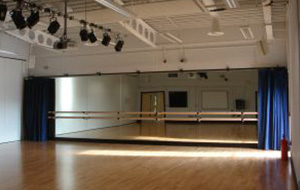 Some of the UK’s leading drama schools offering vocational training to students are set to increase their fees by £250 a year, after the government recently announced plans to raise the maximum that universities can charge. The reasoning behind this is unclear, and already institutions such as Guildhall School of Music and Drama and Rose Bruford College have confirmed their intention to raise fees to the new maximum of £9,250 from August 2017.
Some of the UK’s leading drama schools offering vocational training to students are set to increase their fees by £250 a year, after the government recently announced plans to raise the maximum that universities can charge. The reasoning behind this is unclear, and already institutions such as Guildhall School of Music and Drama and Rose Bruford College have confirmed their intention to raise fees to the new maximum of £9,250 from August 2017.
These changes will be the first time tuition fees have increased since 2012, when the cap for undergraduate fees rose from £3,290 to £9,000 per year. Training institutions which do not offer a degree qualification upon completion are not part of this, however many already charge similar prices for training with them. The new maximum fee will only affect schools funded by the Higher Education Funding Council of England, and does not apply to private drama schools such as Mountview Academy of Theatre Arts and Arts Educational Schools, yet will not mean these fees will not change too.
Whilst not yet confirming, Liverpool Institute for Performing Arts and East 15 Acting School have also said they are seeking to raise fees to the new maximum, while RADA, LAMDA, Bristol Old Vic Theatre School and Royal Central School of Speech and Drama have not yet confirmed whether their fees would remain the same for incoming students in 2017. The general argument seems to be the increase is crucial to enable schools to continue to offer high quality experiences, due to the the resource-heavy requirements of such institutions.
For some schools, fees will not increase for existing students, but the 2017 intake will bear the force of this increase, with applications rising year on year. The government has claimed the new maximum fee charge was being implemented so universities could keep fees in line with the inflation that is forecast, however this does not indicate a blanket increase across costs, fees and wages.
Category: Uncategorised
Difficulty vs execution
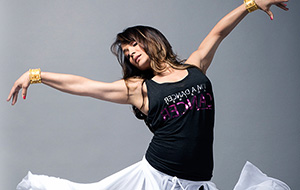 On the dance competition circuit particularly, many competitors can be seen attempting dance moves and combinations beyond their ability, decreasing the value of their performance in the process. For many competition judges, they would prefer to see something simpler performed with greater artistry and skill, than something beyond the capability of the dancer on stage. Teachers may challenge their students in class with complex sequences in order to extend their skills, however on the stage it can be viewed as messy and amateur when it is not performed correctly.
On the dance competition circuit particularly, many competitors can be seen attempting dance moves and combinations beyond their ability, decreasing the value of their performance in the process. For many competition judges, they would prefer to see something simpler performed with greater artistry and skill, than something beyond the capability of the dancer on stage. Teachers may challenge their students in class with complex sequences in order to extend their skills, however on the stage it can be viewed as messy and amateur when it is not performed correctly.
As a result, many may argue difficulty should not come before the execution of a dance move. There is no doubt that competitions demand more and more from competing dancers, but ultimately it is more important to execute the dance well, with correct technique and high quality, rather than struggle with something the teacher has given the student that is too challenging. Dance on the commercial side of the industry continues to want dancers that are stronger, faster and that can kick higher yet this can come at the cost of injury, and other dancers replicating this too.
Many students attempt movements they have seen other, perhaps older dancers perform, and long before their coordination and strength is properly in place in order to support them. Dancers’ bodies need time and repetition to successfully develop technique and skill, and often dancers can experience bad habits and injuries that plague their bodies as a result from being pushed too fast and sidestepping vital technical training.
In order to safeguard younger dancers against injury and incorrect training, the majority of teachers and competition judges would much prefer to see simpler, cleaner lines and steps onstage in choreography than tricks. Adequate dance training is key to achieving and performing.
The Role of the Dance Examiner
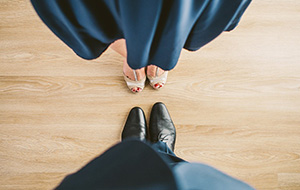 Dance exams can be a scary business, however they can also be the highlight of the year. They are a chance for dance students to demonstrate their dance ability to an objective eye, showing how much they have worked on what they have learnt, be it pre-primary or advanced 2. They can be just as scary for teachers, hoping that their hard work with their students will be observed by the examiner, and it will carry the students through their exam session.
Dance exams can be a scary business, however they can also be the highlight of the year. They are a chance for dance students to demonstrate their dance ability to an objective eye, showing how much they have worked on what they have learnt, be it pre-primary or advanced 2. They can be just as scary for teachers, hoping that their hard work with their students will be observed by the examiner, and it will carry the students through their exam session.
Dancing is of course fun, practised for enjoyment first and foremost, combined with dedication and hard work. Exams consequently require lots of work physically and mentally, and when it is over there is often a huge sense of relief! Exams can be strange performances, solely for the unknown examiner who is the main focal point in the room. It is often that itches and sweat become even more uncomfortable in an exam, dancing under close scrutiny.
The examiner must be impressed both technically and artistically, with the students demonstrating their adequate skill level in both. Despite this, examiners are not always as scary as they come across; teachers or tutors may have become examiners because they enjoy witnessing skills and giving teachings back to students and their dance schools, sharing knowledge and ensuring the standard of dance remains high. Ultimately they want to mark students up knowing they have done their best, contributing to the evolving education of the next generation of dancers and teachers.
Many examiners are sent on journeys to examine students far away from the areas in which they work. It can be a long time away from their own students and dance school if they already teach, as well as their own home. Taking a positive from this, it is important that examiners travel to different areas or perhaps even countries; the exam they are observing will be of the same high standards to adjudicate, demonstrating the consistency of teaching and expectation in dance across the world.
MoovBank: a Learning Platform
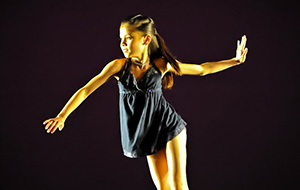 MoovBank, a brand new resource that BalletBoyz, will be launching on 21 September. It will act as a brand new dance education portal which will house filmed lessons to support specialist and non-specialist teachers deliver dance at Key Stage 2, 3 and 4. As digital lessons they will enable teachers to deliver a selection of creative and choreographic tasks to groups, with a specific focus on creativity at KS2, contact work at KS3 and choreography at KS4.
MoovBank, a brand new resource that BalletBoyz, will be launching on 21 September. It will act as a brand new dance education portal which will house filmed lessons to support specialist and non-specialist teachers deliver dance at Key Stage 2, 3 and 4. As digital lessons they will enable teachers to deliver a selection of creative and choreographic tasks to groups, with a specific focus on creativity at KS2, contact work at KS3 and choreography at KS4.
The lessons have been filmed using BalletBoyz company dancers in a mock class so teachers and pupils will be able to watch demonstrations performed by the company, view clips of the Boyz’ stage performances and gain access to behind the scenes rehearsal footage including masterclasses with the dancers and interviews with choreographers. All resources will be housed within the online platform MoovBank, designed not only to increase physical activity and creativity, but also help pupils build trust, work together as a team and problem solve through movement. Alongside digital learning, also available will be downloadable lesson plans outlining learning outcomes and links to the curriculum.
The KS2 resource features lessons that will guide teachers and students through a selection of creative tasks to help pupils generate new and unique movement that can then be assembled to form a short piece. These lessons will be themed, based on the City, technology, the sea, jungle and desert with cross-curricula links to geography and technology.
KS3 focuses on contact work and guides teachers and students through a series of tasks to develop work with the floor and a partner. Tasks include lifting, counterbalance and travelling floor-based movement linking clearly with the Company’s repertoire. Students then have the opportunity to assemble tasks to create their own choreography.
KS4 then focuses on the development of dancers at BTEC, GCSE, A level and even first year undergraduate students. Lessons guide students through possible approaches to choreography looking at music, text and image as stimuli whilst incorporating BalletBoyz footage.
Televised Drama School
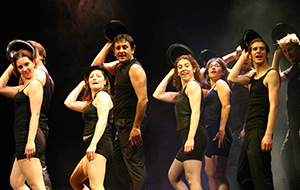 Television channel E4 is set to go behind the scenes of a drama school in order to bring viewers an accurate experience of life studying acting, singing and dancing. The show is expected to be all-singing and all-dancing – like a reality-style Glee – and tell the stories of auditions, love and of course jazz hands. Under the name of Stage School, the television show will be a 30-part series as a form of “structured reality”.
Television channel E4 is set to go behind the scenes of a drama school in order to bring viewers an accurate experience of life studying acting, singing and dancing. The show is expected to be all-singing and all-dancing – like a reality-style Glee – and tell the stories of auditions, love and of course jazz hands. Under the name of Stage School, the television show will be a 30-part series as a form of “structured reality”.
Stage School will be made by Knickerbockerglory, the company behind the television production of Pineapple Dance Studios, which made a star of Louis Spence, the studios’ artistic director. The show will focus on the behind the scenes life of the D&B Academy of Performing Arts in Kent, featuring the ups and downs that are true to life of those trying to make it in the world of show business. E4 will follow the students at West End auditions and showcases, providing an in-depth insight into their stagey lives.
Along with auditions and performances comes the fall-outs and making up that is so common among young people, especially in a close-knit environment such as this one. Interspersed with breaking out into singing and dance routines, the pupils will receive further performance opportunities on television in addition to their day to day lives. Stage School will chart this and play back to an audience including many others who also want to become superstars. The show will aim to capture the drama, hard work and talent of the pupils.
Singing throughout the show may not be everyone’s preference, however for the producers it is a natural next step on from rehearsals and performances, cutting through the reality for the experience of the viewers.
One Dance UK’s Together for Dance Gala
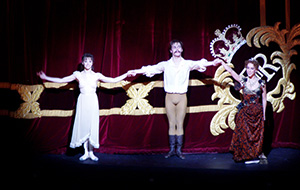 One Dance UK’s Together for Dance Gala performance is picking up speed, tickets for which are now on sale. In what has been named the dance event of the season, the gala will take place at the Novello Theatre in London’s West End on 9 October. The Together for Dance Gala is the first major fundraising event for the organisation since One Dance UK became the national body for dance as a result of the merger of four key national dance organisations in April. The gala has been designed to raise funds towards One Dance UK’s programmes supporting dancers’ health, a range of artist and art form development, and projects for children and young people.
One Dance UK’s Together for Dance Gala performance is picking up speed, tickets for which are now on sale. In what has been named the dance event of the season, the gala will take place at the Novello Theatre in London’s West End on 9 October. The Together for Dance Gala is the first major fundraising event for the organisation since One Dance UK became the national body for dance as a result of the merger of four key national dance organisations in April. The gala has been designed to raise funds towards One Dance UK’s programmes supporting dancers’ health, a range of artist and art form development, and projects for children and young people.
An exciting line-up has been announced, with the legendary Dame Gillian Lynne, DBE as the gala patron. Mara Galeazzi, former Principal of the Royal Ballet, and Artistic Director of Together for Dance, is curating a programme featuring BalletBoyz, Company Wayne McGregor, English National Ballet, Impact Youth, Jaivant Patel Dance, New Adventures, Gary Avis & Zenaida Yanowsky, Namron, Tommy Franzen & Xena Gusthart, and Mara Galeazzi herself. The exciting array of performers will include special guest artists, a world premiere, and a few surprises!
The Together for Dance fundraising gala will be an exciting opportunity to showcase the diversity of dance and dancers that One Dance UK represents, champions and nurtures. It will work to aid the wide range of programmes that One Dance UK runs, raising vital funds for work which supports and enriches the dancing lives of those at every level of the sector. Ultimately the new organisation aims to provide the best possible future for dance in the UK.
Special VIP tickets include entry to the pre-performance reception, premium seats, interval champagne, and an after-show black-tie dinner at the Waldorf Hilton alongside a number of artists taking part in the show.
Dancers and Athletes – Health and Wellness
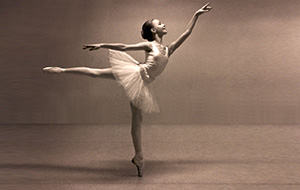 Giving dancing bodies the correct fuel to perform is of utmost importance. Many professional dancers stick to specific pre-show routines before they perform, and these all include helping the body to achieve its best by giving it what it needs to do so. It is important for dancers to nourish their bodies, as the body is the dancer’s tool, and there is just one of those! It must be cared for accordingly so it is still fit and healthy. Similarly, athletes will also work hard to look after their bodies and nourish them correctly, in order to gain optimum output for what is required.
Giving dancing bodies the correct fuel to perform is of utmost importance. Many professional dancers stick to specific pre-show routines before they perform, and these all include helping the body to achieve its best by giving it what it needs to do so. It is important for dancers to nourish their bodies, as the body is the dancer’s tool, and there is just one of those! It must be cared for accordingly so it is still fit and healthy. Similarly, athletes will also work hard to look after their bodies and nourish them correctly, in order to gain optimum output for what is required.
Whilst looking after the muscles and bones through diet and specialist care, the body’s overall energy and health must also be considered, both physically and mentally. Moving away from this concept is when dancers and athletes restrict their diets, as the body cannot produce enough energy to perform at its best, be it artistically or technically. The body will then turn to other energy sources within the body, so it is essential to retain the body’s muscle, strength, performance and appearance by consuming the right things. The body needs protein in order to repair itself effectively and prepare for the next day, as well as carbohydrates for energy and minerals and vitamins from vegetables and fruit.
Decisions about diet must be made according to what the body’s performance or health requires, balancing this with promoting general health and wellbeing. Burning out can occur at any stage of dance training or consequent career; the diet is the fuel that dancers invest in the body, as do athletes, and food should be balanced for wellness and enjoyment. When dancers and athletes discover how the body works best – in a combination of rest, wellbeing and diet – it will then become easier to produce the most on the way to its best self.
Strictly 2016
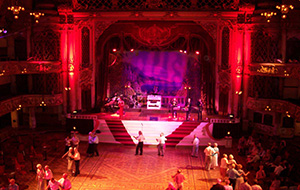 Strictly Come Dancing is always a highly anticipated event in both the dance and the popular culture calendar. With celebrities vying to win the contest ahead of their star-studded peers – and impress the panel of judges too – it makes for entertaining viewing full of wonderful costumes and eye-catching routines. The professional dancers taking part in this year’s Strictly Come Dancing have already been announced, with three brand new dancers joining the returning favourites. New to the line up are World Champion Katya Jones, Ukrainian Champion Oksana Platero and Spanish dance professional Gorka Marquez.
Strictly Come Dancing is always a highly anticipated event in both the dance and the popular culture calendar. With celebrities vying to win the contest ahead of their star-studded peers – and impress the panel of judges too – it makes for entertaining viewing full of wonderful costumes and eye-catching routines. The professional dancers taking part in this year’s Strictly Come Dancing have already been announced, with three brand new dancers joining the returning favourites. New to the line up are World Champion Katya Jones, Ukrainian Champion Oksana Platero and Spanish dance professional Gorka Marquez.
Returning to Strictly are Anton du Beke, Brendan Cole, Kevin Clifton, Pasha Kovalev, Aljaž Škorjanec, Giovanni Pernice, Karen Clifton, Natalie Lowe, Joanne Clifton, Janette Manrara and Oti Mabuse. Tristan MacManus, Ola Jordan, Kristina Rihanoff and Aliona Vilani announced at the end of last series that they would not be returning to the show, as well as Gleb Savchenko, who has other commitments. Head judge Len Goodman also announced recently that 2016 will be his last Strictly series, disappointing news for many, and now much speculation as to who will fill his shoes in this position.
There has been much speculation also as to who the celebrity dancers will be for this series of Strictly, pairing up with the professional dancers in the Autumn. Names that have so far emerged from the rumour mill include barrister and daytime TV phenomenon Judge Rinder, and TV presenter Angelica Bell, who has now been confirmed as signed up for this year’s contest. Other names include Downton Abbey actress Michelle Dockery and American pop singer Anastasia, adding to the clan of performing arts professionals who will no doubt shine in the spotlight!
Misty Copeland – Disney Star
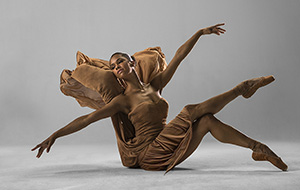 American Ballet Theatre principal Misty Copeland is set to star as the lead ballerina in the live-action version of The Nutcracker created by Disney. She is well on her way to becoming a household name with what might be her biggest job yet. Having already identified herself as accomplished in a number of balletic roles, this Nutcracker gig is not the first time Copeland has been on screen but is one of a kind for the ballerina.
American Ballet Theatre principal Misty Copeland is set to star as the lead ballerina in the live-action version of The Nutcracker created by Disney. She is well on her way to becoming a household name with what might be her biggest job yet. Having already identified herself as accomplished in a number of balletic roles, this Nutcracker gig is not the first time Copeland has been on screen but is one of a kind for the ballerina.
The film is entitled The Nutcracker and The Four Realms, directed by Lasse Hallström. Hallström’s filmography also includes titles such as The Cider House Rules, Chocolat, Hachi: A Dog’s Tale, and Salmon Fishing in the Yemen. Copeland is familiar with the role of Clara, dancing the part in Alexei Ratmansky’s production of The Nutcracker. She will be appearing in the film’s dance sequence however there is no word on who the choreographer may be just yet. Also unconfirmed is the release date for the film.
The Nutcracker and The Four Realms will be based on E.T.A. Hoffmann’s story “The Nutcracker and the Mouse King,” in which a young girl named Marie watches her toy nutcracker comes to life, fights the evil Mouse King, and is whisked off to a magical land filled with living dolls. The classic ballet, with its iconic score from Tchaikovsky, is based on that tale. It has been adapted for the big screen many times over the past few decades, most recently in 2009, with The Nutcracker in 3D.
Ahead of any filming or choreography schedules, Copeland is keeping herself very busy. Alongside dancing as a principal with American Ballet Theatre, this summer alone she is launching her own dancewear line, named Egal. She is also appearing in a Cosmopolitan magazine feature and even getting married.
Why Do You Dance?
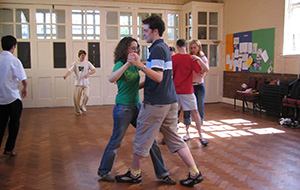 Dance is a universal concept, not limited to any one culture or age group. It can give so much to so many people, whether that is by partaking in the art form or by watching and enjoying from the sidelines.
Dance is a universal concept, not limited to any one culture or age group. It can give so much to so many people, whether that is by partaking in the art form or by watching and enjoying from the sidelines.
Dancing can take on many forms; it could be a once-a-week ballet class to work back to a childhood dream, it could be a ballroom class in order to meet new people, or a contemporary class to deposit some of that creative energy somewhere. And then it could be a monthly treat to visit the local theatre to see visiting productions or it could be teaching an older generation how to trust their bodies again.
Whatever your reason for enjoying dance, it is a very individual one. The reasons dance teachers train and teach their own classes is very different to a career in company management, and very different also to an aspiring performing artist starting to audition for jobs. Despite this dance can be the element that brings people together in a community, as it is how groups celebrate after wedding ceremonies and it makes so many people happy. On a scientific level the exercise of dance releases endorphins which positively affect the body, and equally watching dance can bring about this same feeling of contentment.
Why do you enjoy dance? The reasons can be wide-ranging. Dance and the performing arts can offer much release from everyday life, thy can offer friendship and fun. For some the hard work and graft of dance are the enjoyable means to an end in which they aspire to become a professional dancer yet for others it is a way to use the body and feel free for a few hours each week.
